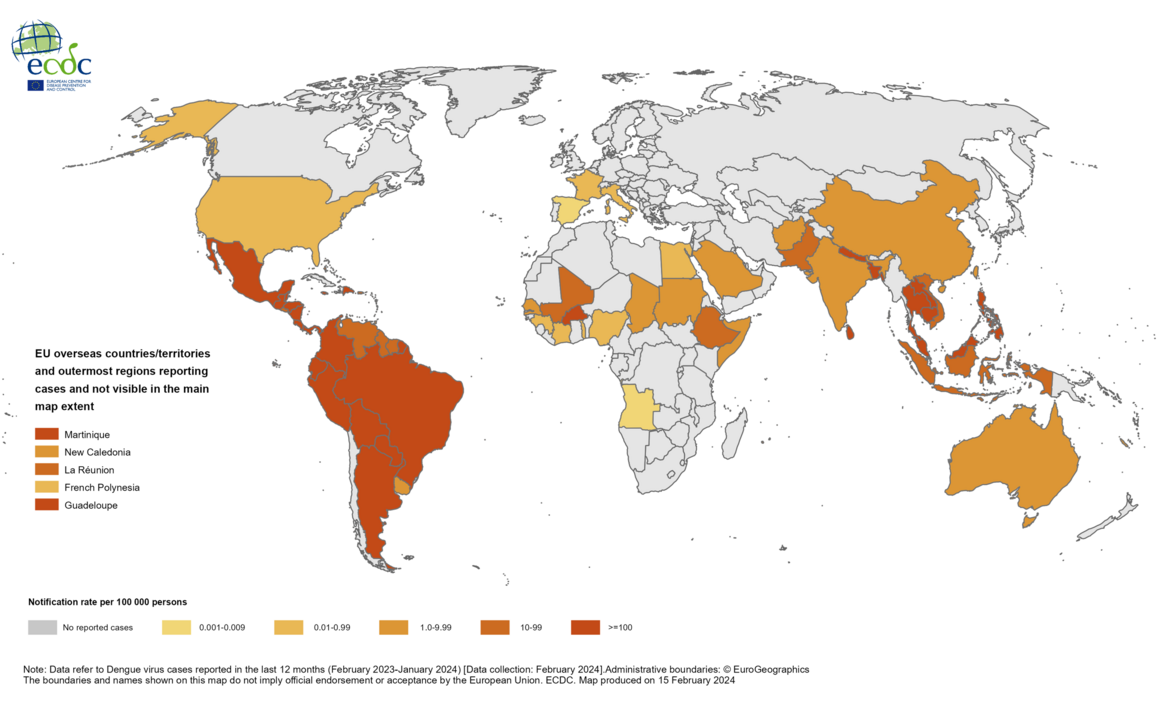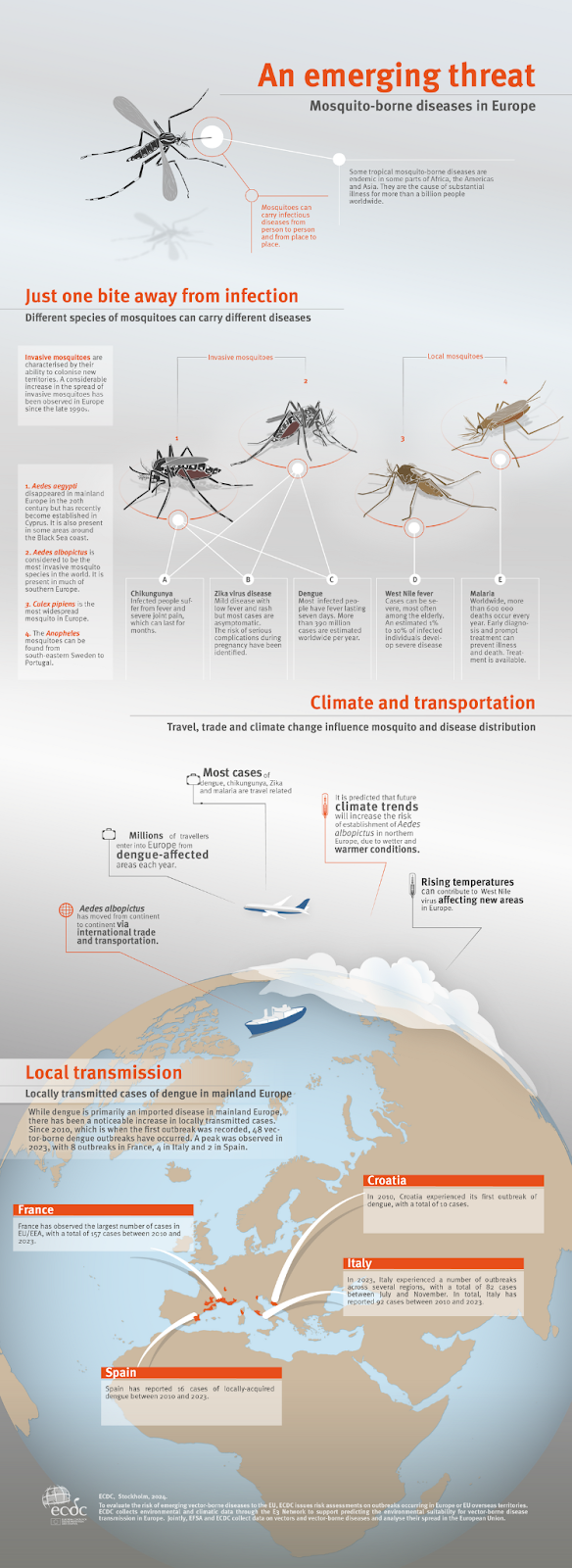Fitness
Mosquitoes spread diseases to new regions of Europe – VaccinesToday

‘Dengue fever and West Nile Virus outbreaks grow as summers get warmer, wetter and longer – while imported cases from the Americas surge’
Mosquitoes are transmitting dengue to parts of Europe previously untouched by the disease. Environmental changes are making northern and western Europe increasingly hospitable to species of mosquitoes once associated only with tropical and subtropical regions of the world, according to the European Centres for Disease Prevention & Control (ECDC).
‘Europe is already seeing how climate change is creating more favourable conditions for invasive mosquitoes to spread into previously unaffected areas and infect more people with diseases such as dengue,’ said Dr Andrea Ammon, Director of the ECDC.
New data show that there were 130 locally acquired cases of dengue reported in the EU/EEA in 2023 and 71 cases in 2022. This is a significant increase compared to the ten-year period 2010-2021, where the total number of locally acquired cases was 73 for the whole period.
In addition, there has been a sharp rise in cases imported through travel and trade, with 1,572 reported in 2022 and over 4,900 in 2023. This is the highest number of imported dengue cases reported since the start of the surveillance at the EU level in 2008.
‘Increased international travel from dengue-endemic countries will also increase the risk of imported cases, and inevitably also the risk of local outbreaks,’ Dr Ammon said.
There are signs that the dengue numbers are accelerating. In the first months of 2024, several European countries reported substantial increases in the number of imported dengue cases, which could suggest that the numbers this year might become even higher than last year’s record.
There may be several reasons for this surge, including a rise in global dengue rates, and a significant increase in the number of airline passengers arriving in Europe from countries where dengue is endemic. The Americas are a particular hotspot, with the region recording around 7 million of the world’s 7.6 million cases so far this year.

In addition to travel, growing global trade in used tyres and bamboo plants can be a source of outbreaks, as these products are known to provide ideal breeding grounds for mosquitoes. Standing water is also an established risk factor for thriving mosquito populations.
Aedes aegypti, a vector of yellow fever, dengue, chikungunya, and Zika viruses recently established itself in Cyprus. Its potential for establishment in other parts of Europe is concerning due to its significant ability to transmit pathogens and its preference for biting humans.
With Paris preparing to host the Olympic and Paralympic Games this summer, French authorities are on high alert. France is not among the worst affected areas for the Aedes aegypti mosquito, but the significant increase in international travel to the French capital is seen as a potential risk.
- As of 2024, Aedes albopictus is established in Austria, Bulgaria, Croatia, France, Germany, Greece, Hungary, Italy, Malta, Portugal, Romania, Slovenia, and Spain, and it is introduced in Belgium, Cyprus, Czechia, the Netherlands and Slovakia.
- As of 2024, Aedes aegypti is established in Cyprus and in several EU outermost regions, such as Madeira (Portugal) and the French Caribbean islands.
West Nile Virus
For West Nile virus, in 2023, EU/EEA countries reported 713 locally acquired human cases in 123 different regions of nine EU countries. Twenty-two of these regions were reported as places of infection for the first time in 2023. Sixty-seven deaths were also reported. The reported case count is lower than that of 2022, with 1,133 human cases, but the number of affected regions is the highest since the peak in 2018, indicating a wide geographical circulation of the virus.
This year, a confirmed locally acquired human case of West Nile virus infection with onset of symptoms at the beginning of March was reported in Seville, Spain. Although an isolated case, it highlights that the transmission of West Nile virus can occur very early in the year, likely due to suitable climatic conditions.

Protective measures: what can you do?
Dr Celine Gossner, Principal Expert in Emerging and Vector-borne diseases, ECDC, highlighted six ways that individuals and health authorities can reduce their risk of mosquito-borne illnesses.
- Individual protection against mosquito bites, including insect repellent, wearing long sleeves, using bed nets and air conditioning/fans when sleeping
- Vector control, including the elimination of standing water in containers, buckets, flower pots and tyres, as well as insecticides when mosquito populations are very high
- Early detection of cases and proper case management
- Timely surveillance by health authorities
- Two dengue vaccines are approved in the EU but these are for highly endemic areas and are not currently part of the ‘toolbox’ for fighting dengue in Europe
- Raise awareness among general public, travellers and health professionals
Read more:
Will warmer climate mean more infectious diseases?











